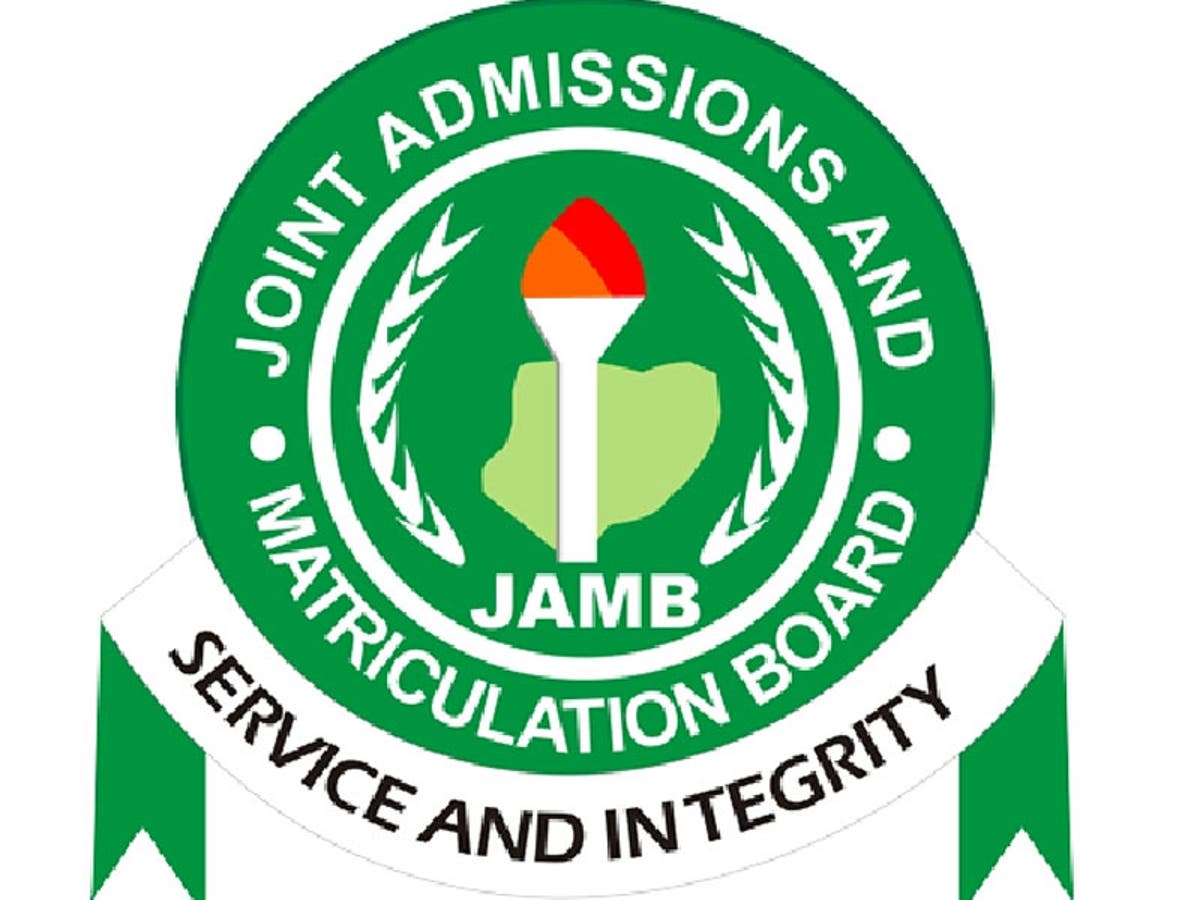The yearly minimum cut-off mark by the Joint Admission and Matriculation Board (JAMB) has over time been generating a lot of concerns. Many believe the mark has become so low and seems to lower the standard of the examination while others think that it is the right thing to do to deny many access to higher education and more importantly not to deny some higher institutions the opportunity of getting students admitted.
Last year, JAMB pegged the minimum mark at 140 for universities, 100 for polytechnics and 80 for Colleges of Education; and for 2023, it was pegged at 140 and 100 for universities, polytechnics and Colleges of Education respectively. Certbolt
Though, JAMB Registrar, Prof. Ishaq Oloyede, explained that the aforementioned points are the minimum, but that does not mean that institutions must comply wholly with it.
He noted that institutions have the liberty to determine their cut-off points but must not be below the mark agreed upon at the policy meeting and the collective decision of all heads of tertiary institutions in both private and public institutions.
- Pray for adequate rainfall, Bauchi gov urges Muslims
- As Nigerians mark Eid-el-Kabir: Tinubu, royal fathers, Imams harp on unity, patriotism
On the lowering of cut-off marks, he had said it was a minimum benchmark that institutions must not go below so as not to affect education standards.
Meanwhile, many have failed to understand that scoring 140 and above is not a guarantee that you will gain admission into the university of your choice because they have different cut-off marks for different courses, of which many require above 200.
The minimum of 140 as explained by the JAMB, simply implies that if any varsity must give admission to a student, he or she must not score below 140.
Meanwhile, Prof Oloyede, during the 2023 policy meeting in Abuja, discounted the notion from the public domain that admissions were given by JAMB, saying, admissions depended on the availability of candidates’ five O’level requirements as the UTME was only meant for admission ranking.
Admissions statistics based on performance
In his presentation on the 2022 admission exercise, he said from over 1.8 million applications from UTME and Direct Entry, only 557,626 candidates have so far been admitted into tertiary institutions across the country..
According to him the admissions are however still ongoing, but the 557,626 is against 429,351 admitted in 2021.
He said the 2022 admission process was still on due to opportunities given to some key players in the sector to conduct admissions.
According to the data presented, 1,867,743 candidates who sat for UTME and applied for DE are seeking admission into tertiary institutions. Out of these, DE has 115,229; with those who sat for UTME and scored 100+ numbering 1,700,841 and those who scored 140 and above at 1,615,656.
The analysis of the data showed that candidates with 5 O’Level Credits and scored (100+) + DE are 1,177,242 while those with 5 O’Level Credits with 100+ including English & Maths plus DE candidates are 1,147,230 and those with 5 O’ Level Credits and scored 140+ and above including English & Maths plus DE at 1,116,021.
Invariably, the data showed that 557,626 who scored 140 and above in their UTME and have uploaded their O’ Level Credit Passes including English and Mathematics out of the 1,116,021 candidates qualified have so far gained admission.
The breakdown of the 2022 UTME performance of the admitted candidates by score range showed that those who scored 300 and above have 5,833 applicants and only 3,708 (63.57 per cent) have been admitted so far.
For those who scored between 250 to 299, a total of 59,494 candidates applied and 29,485 (49.56 per cent) were admitted so far.
Candidates with 200 to 249 scores had 320,430 applicants and 130,865 (40.84 per cent) were admitted.
For 160 to 199 scores, 830,866 applications were recorded and 257,902 (31.04) per cent were admitted.
Those who scored 140 to 159 have 407,300 applications while 87,988 (21.60 per cent) candidates have been admitted so far.
While those who scored from 120 to 139 have 79,837 applications and only 10,796 candidates (13.52 per cent) were admitted, those with 100 to 119 have 5,628 (6.97 per cent) candidates admitted and those who scored below 100 had 51,874 applications and 0 admissions.
The data further showed admissions based on institutions, with universities/degree-awarding ones having 417,607 admissions. Federal universities have 180,601, state varsities 190,586 and private varsities 46,420.
For polytechnic/monotechnics, 107,114 candidates were admitted with 55,892 for federal, 44,397 states and 6,825 private institutions.
Colleges of Education have a total of 31,890 admissions so far with 22,800 for federal, 8,503 state and 587 private, while innovation enterprise institutions have 1,014 admissions.
Meanwhile the JAMB registrar said the reasons for percentage of unadmitted candidates include rigidity of programme choice (MBBS, B.Sc Nursing, Law, etc), mismatch of demand and supply, lack of interest (demand) for existing vacancies (NCE, Education, Agric and Basic Sciences) and trial-candidates (No O/Level/awaiting results)
Experts speak on cut-off marks
Some experts have submitted that to improve the standard of education, the minimum cut-off marks should be higher than what is obtainable now.
An educationist, Michael Sule said: “The marks sound ridiculous because I remember in those days when you had to strive so hard to get good scores, but now if I can score below 200 and get admission I may not need to put in more effort.
“The truth is that university education is not for everyone, but we make it so cheap that everyone thinks he or she must go to university to be able to be proud as a BSc holder. We have polytechnics and Colleges of Education which should serve people who cannot get a good score so as not to go to new universities or private universities with a score of 140,” he said.
Sule however maintained that no university should admit any student with a 140 score even for courses like education, that they should go to polytechnics and Colleges of Education.
A teacher, Oluwabunmi Anani, told Daily Trust that JAMB cut-off marks are dictated by the general performance of candidates, the need to encourage or peg admissions, and the general decline in the standard of education as reflected in poor results, catchment area considerations, etc.
She however said they should stop encouraging mediocrity and laziness. “It is killing our structure as a people! Let’s begin by putting an end to disparities in cut-off marks! If the general cut-off mark as we used to know it was 200, why should it drop to 140? Yet, we complain of falling standards?”
Meanwhile, Daily Trust reports that the President of the Colleges of Education Academic Staff Union, (COEASU), Dr. Smart Odunayo Olugbeko, had at a recent function, spoken about JAMB cut-off marks.
Dr Olugbeko said contrary to demands that it should be uniform mark across all tertiary institutions, “We beg JAMB to reduce our cut-off mark so we can have students to teach.”
“When you don’t have students, who do you teach? When you don’t have students to teach, you don’t have a job. That is why we need to attract certain incentives because it is a problem with teachers’ education and not CoE. If the federal government is willing to address the issue, teachers’ welfare and conditions of service should be addressed,” he said.
Also, the spokesman of JAMB, Dr Fabian Benjamin, refuted the claim that it was bringing down the quality of education, saying, making it higher will also not help the system because people are looking at the reward system.
“Someone who scored 300 will not want to read education because of the poor salary of teachers and you can’t force them, so they run to engineering and medicine because they feel the reward system is better.”

 Join Daily Trust WhatsApp Community For Quick Access To News and Happenings Around You.
Join Daily Trust WhatsApp Community For Quick Access To News and Happenings Around You.


